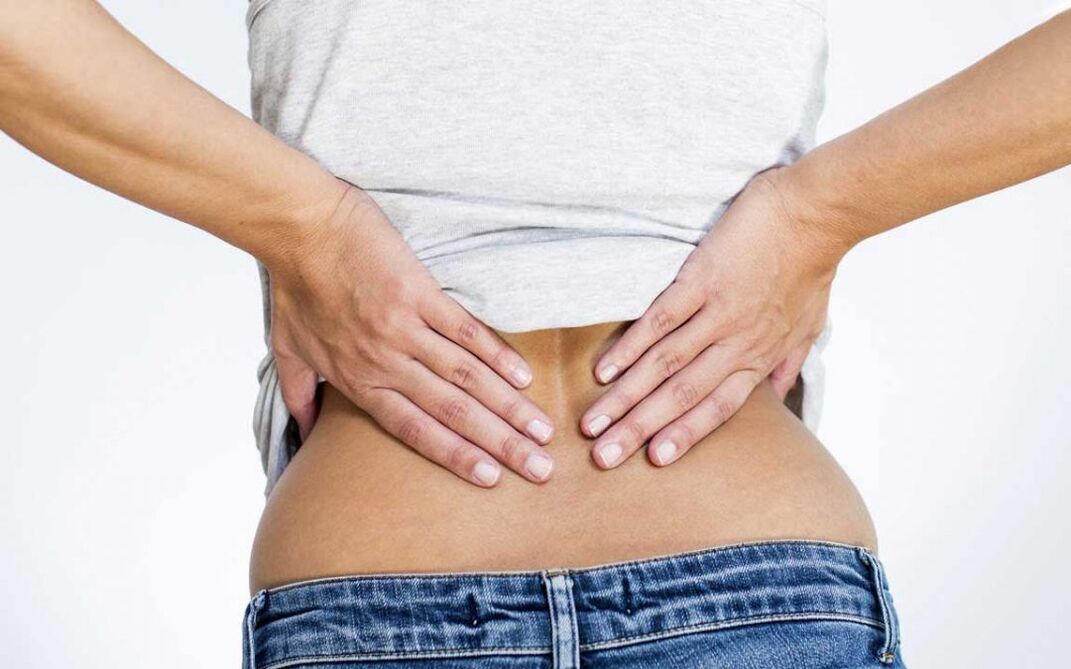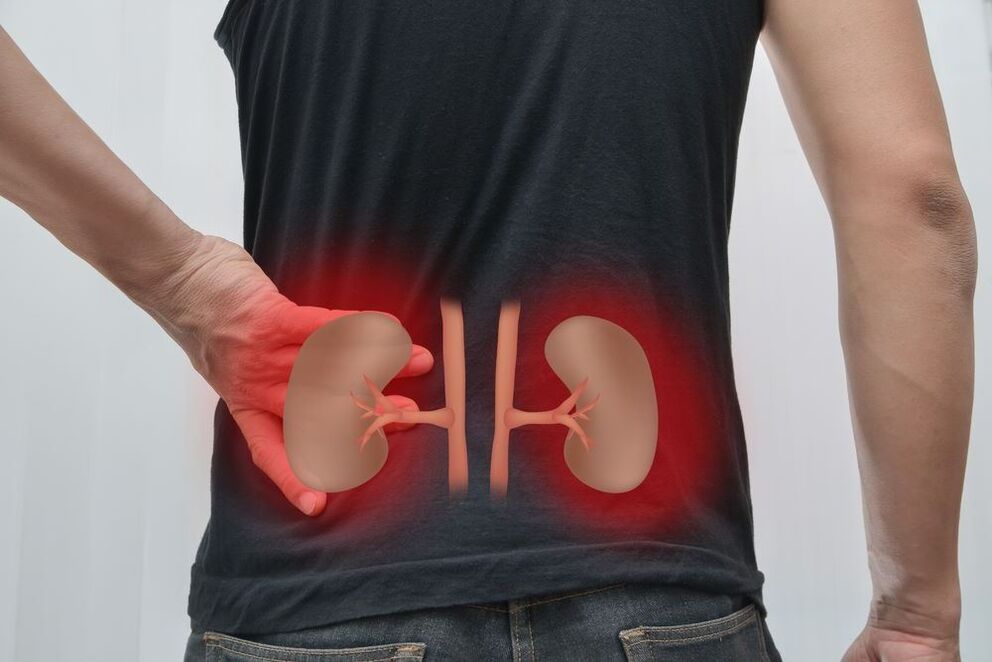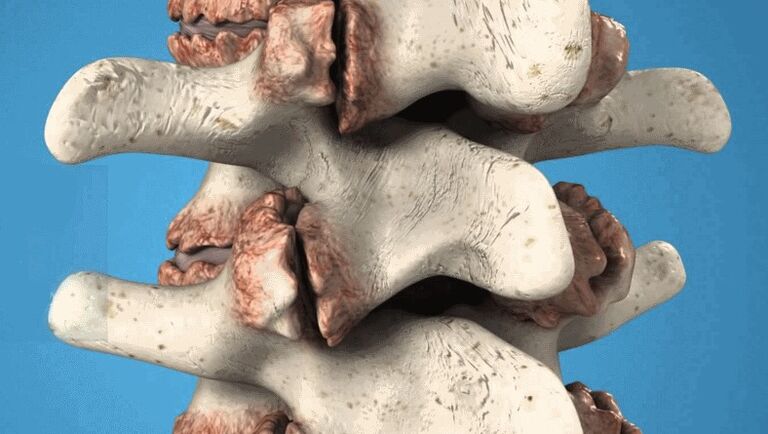
In fact, there is no one who at least once in his life has not suffered from low back pain. This is how we pay for our vertical walking and our daily routines.
In addition to injuries that can affect the spine, muscles, nerves and ligaments, it should be noted that sometimes low back pain is caused by medical conditions - kidney, gastrointestinal andfemale genital organs.
Symptoms of low back pain can range from a dull ache to a sharp pain. The pain may go away on its own or become chronic (symptoms have been present for more than three months).

Danger! You should consult your doctor immediately if:
- sudden low back pain after an obvious back injury;
- temperature rises sharply, there are signs of vegetative disorders, loss of consciousness, sweating, difficulty breathing;
- bowel emptying and bladder incontinence occur;
- there is a feeling of numbness in the groin area;
- weakness of the lower extremities, paralysis or paralysis, decreased sensitivity;
- stomach pain and sharp increase when coughing or sneezing;
- symptoms appear against the background of marked weight loss, prolonged steroid use, immunosuppression;
- There is a family history of cancer, inflammatory or degenerative diseases of bone and cartilage tissue.
Why does my back hurt in the lumbar region?
Nerve pain
Muscle tension or spasm can develop gradually or occur suddenly. With high loads, the injury affects not only the muscle fibers, but also the ligamentous and muscular apparatus.
Muscle pain in the lower back appears as follows:
- lifting heavy weights or overexerting yourself at work or playing sports;
- play sports from time to time. Muscles are especially vulnerable if you're inactive during the work week and then spend hours in the gym on the weekends;
- one's own body weight increases sharply, with which the muscles do not have time to develop;
- sitting for a long time or standing in an uncomfortable position;
- carry the daily bag in either hand or over the shoulder;
- posture disorder. The spine performs its best support and protection function when you are not bending over. The muscles in the lower back are least stressed when you sit with good support under your lower back and in a standing position distribute the weight evenly to both legs.
If your back is painful after a bruise, fracture, sprain, hypothermia, infectious disease, or worm infestation, myositis (inflammation) of the muscles in the lower back may be suspected. Constant severe pain caused by inflamed muscle fibers, "nodules" can be felt in the muscles - places of spasm. Inflammation can be acute or chronic. The disease progresses for a long time, the pain is unstable, worsens when lying down or sitting for a long time, late in the afternoon or when the weather changes. Touching the muscles causes pain and discomfort, the muscles of the lower back are constantly tense, inflammatory edema is formed, the temperature rises locally and at the whole body level.
During muscle spasms, the roots of the spinal nerves are compromised, so the pain often resembles the picture of sciatica or sciatica - there are sharp pains along the back of the spine. thighs and legs, limbs numb, loss of sensitivity. The marked increase in muscle tone in myositis causes the patient to have awkward postures, to walk, to lie down, to stoop, to move the bent leg.
How to treat muscle pain of the spine? Non-steroidal anti-inflammatory drugs and analgesics are used to eliminate inflammation and pain. The drug can be administered in the form of tablets, ointments, injections, transdermal patches with a gradual release of the active ingredient. Irritant and warming ointments are also used, which reflexively increase blood flow to the muscles in the lower back. A greater inflow of blood contributes to washing away the products of inflammation and tissue breakdown.
The reduction of inflammatory edema is facilitated by corticosteroid injections and vasopressors.
If the cause of myositis is an infection or poisoning with worm toxins, antibiotics or dewormers will be used initially. In this case, warm ointments or dressings cannot be used.
Diseases of the spine related to the nerves
In the lumbar region, the vertebrae are separated by elastic cartilage discs, which protect the spine from injury, but are themselves subject to wear and aging.
Typically, the disc is a jelly-like nucleus surrounded by a denser fibrous annular layer. The elasticity of the core is due to its ability to bind and hold water: as the load increases, it accumulates water, and the elasticity increases, when the pressure decreases, the core releases water and becomes flatter. .
Osteoma of the vertebral region develops when the intervertebral discs are undernourished ("dry") or subjected to excessive local load. Usually, lower back pain is caused by the lower poles of the discs that bear the greatest load when sitting, when lifting weights in front of you. At the same time, tears and displacements form in the discs, vertebral ligaments are damaged, constant pain, vibrations.
Pain in the spine has several mechanisms of development:
- violation of the circulation in the tissues surrounding the spine and especially in the spinal canal, the formation of congestion and edema. Such conditions develop against the background of hypothermia, overheating, inflammation.
- degenerative process in the fixed ligaments of the spine. The increased mobility of the vertebrae leads to slight displacement and non-physiological compression, causing nerve and vascular invasion and hernia formation.
- axial compression of the vertebrae when lifting weights or injuring them during excessive rotation.
- sterile inflammation. The destruction of the nucleus leads to the release of sensitizing factors into the spinal canal. There is irritation of the nerve endings, which causes contraction of the invading muscles to the adjacent vertebrae - above and below the hernia. Gradually, the reaction covers the entire lumbar region and leads to the fact that any movement causes pain.
A weakened disc can rupture, leading to a bulge, bulge, or prolapse, and eventually a herniation. Herniated mass appears to put pressure on the spinal cord and spinal nerve roots. In such conditions, sharp pain in the lower back appears strong, moving along the pinched nerve. The best known cases of sciatic nerve compression (sciatica) are manifested by sharp pain along the back of the thigh and lower leg, numbness of the limb from the side of the hernia, muscle weakness, not self-control. foot.
Pain in the lumbar spine is worse when sitting and standing, when turning, leaning. There is usually a muscle-protective response - a painful spasm of the muscles (forming rollers) on both sides of the spine, which isolates this part from unnecessary movements. Osteoporosis then leads to the appearance of sciatica (inflammation of the roots of the spinal nerves).
Lens syndrome is very dangerous when the nerves of the lower back, responsible for the envelopment of internal organs (horns of the horse bone), are compressed. At the same time, stomach pain, bladder and bowel function disorder, capacity problems in men and gynecological diseases in women.
Many patients find that the lower back hurts a lot, so they perform pain-relieving postures - leaning to the left, if the pain is right, then lying on the right side. If the hernia is left. Also characteristic is the appearance of severe pain when pressing on the herniated mass in the disc space (bell symptom).
How to treat if your back is painful due to osteonecrosis:
- when there is pain, you can do an anesthetic position - lie on your back and put the roller under your knees. It is also recommended to sleep on a hard surface;
- from pain relievers, NSAIDs can be taken orally or injected into either side of the spine at the lumbar stone;
- use of local irritants as a distraction - mustard powder, iodine nets, pepper patches and ointments;
- eliminate muscle spasms through manual therapy, acupuncture, vacuum massage, acupressure, gymnastics;
- in the period of acute deterioration can be used to treat sludge, ozocerite, reheat.
Treatment of pain in lens syndrome includes:
- provide bed rest, lumbar traction (dry or underwater);
- use of novocaine blockade at the site of violation, use of weak NSAID or opiate drugs;
- physiotherapy - microcurrent stimulation, electrophoresis with analgesics.
Indications for surgery are persistent acute pain, as well as impaired function of internal organs, quadriplegia, continuous hernia in the spinal canal.
Degenerative inflammatory lesions
Spondylarthrosis (inflammation of the facet joints of the vertebrae) occurs with degeneration and reduction in the height and volume of the discs. Pain in the lower back occurs due to overstretching and increased pressure on the intervertebral disc surface. The pain causes the patient to bend the back more, thereby increasing the overload of the disc joints. In particular, lower back discomfort is aggravated when wearing high heels, walking for a long time, getting off elephants, postures when the body is tilted back, for example when looking at something overhead.
In these diagnosed patients, stiffness in the lower back is noted in the morning, with pain increasing during the day or after exercise. It is diffuse and difficult to delineate: discomfort is defined in the gluteal muscles, inguinal region, lower abdomen and in the scrotum in men. This spondylolisthesis is different from lens syndrome, in that you can't pinpoint the exact source of the pain.
What to do to relieve pain? It often helps with the supine position, with the legs flexed at the hip and knee joints.
Their preferred medications are non-steroidal anti-inflammatory drugs and non-narcotic analgesics.
Muscle relaxants are also added because they relieve muscle tension and improve spinal mobility.
Psychotherapy has a positive effect, since chronic pain puts the patient in a state of depression.
Spondylolisthesis, unlike osteonecrosis, affects the fibrous annulus of the intervertebral disc and the anterior longitudinal ligament. With this disease, calcification of connective tissue structures occurs with the formation of growths along the edge of the vertebrae - osteoblasts. These formations cause a violation of the circulation near the nerve root and lead to low back pain, the mobility of this part is also limited.

Spinal osteoma is a pathological growth that damages nerves and blood vessels.
Treatment is usually conservative, with the use of anti-inflammatory drugs, analgesics, vitamins. A good effect is shown by electrophoresis with novocaine, lidase, manual therapy, physical therapy (amplipulse, laser installation, shock wave therapy to destroy compressive elements and increase column mobility. living).
Note! In the advanced stage, the osteoclasts do not break down. Although their size is small, the treatment is aimed at reducing inflammation, reducing pain, and improving metabolism. If the back does not hurt much, then there is no problem with its development. If the bone cells are causing persistent or large pain, they may be removed during surgery.
Diseases of a tumor nature
Low back pain can occur because a tumor compresses the spinal cord from the outside (forming outside the spinal cord) and from the inside (intramedullary, originating from the cerebrospinal substance itself).
Cells of different tissues can develop pathologies:
- fatty - a lipoma is formed;
- nerve roots - neuroma;
- spinal cord blood vessels - hemangioma;
- accessory tissue - glioma;
- bone tissue - bone tumor;
- cartilage - chondrosarcoma.
The tumor process, especially malignancy, is characterized by a sciatica-like pain syndrome (it can be unilateral and bilateral), general deterioration of the patient's condition and exhaustion.

If the disease affects the lumbar vertebrae I-IV, there is burning pain in the front and sides of the upper thighs, incomplete paralysis of this area.
With lesions in the lumbar region IV - sacral segment II, numbness of the genitals, impaired mobility and internal sensation of the gluteal muscles, posterior thighs, calves, stool and urinary incontinence are noted. .
A marked disturbance in the functioning of the pelvic organs occurs with a tumor in the V-III sacral vertebrae. Patients with impotence or menstrual disorders, constipation or stool and urinary incontinence.
Tumor treatment is specific, pain relievers and anticancer drugs are prescription drugs.
As you can see, low back pain is often caused by musculoskeletal conditions. They can be diagnosed by clinical signs and research data, the main task of which is to accurately determine the nature of the disease and not confuse it with cancerous causes, diseases of internal organs orinjury. If you have lower back pain, we recommend that you always seek the advice of a neurologist or chiropractor.

















































